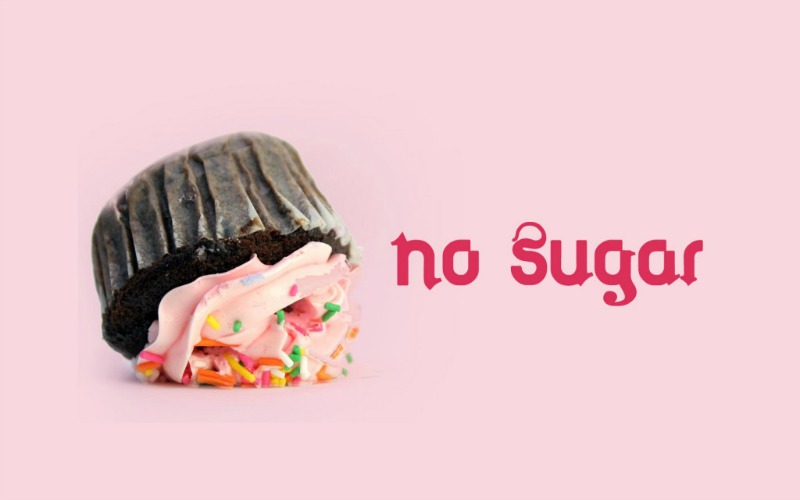
18 Sep Tips for Going Sugar Free
Sugar is a destructive substance that most people eat far too much of. Every day, more studies are proving that sugar plays a pivotal role in the development of many of the devastating illnesses we fear most, namely heart disease, cancer, diabetes and Alzheimer’s to name a few.
The body does need trace amounts of sugar to function, but on average we are eating sugar by the pound, not the molecule. New Zealanders are eating an estimated 52kg a year of sugar – 1 kg a week – an astonishing amount of any substance, much less one with such disastrous health implications.
You can make a change and use these tips to help you reduce or quite sugar for good.
1. Eat regularly – Eat three meals and two snacks or five small meals a day. For many people, if they don’t eat regularly, their blood sugar levels drop, they feel hungry and are more likely to crave sweet sugary snacks. With time, as you break free from sugar and start eating more fat and protein and fewer carbs, you won’t need to eat as often.
2. Choose whole foods. The closer a food is to its original form, the less processed sugar it will contain. Food in its natural form, including fruits and vegetables, usually presents no metabolic problems for a normal body, especially when consumed in variety.
3. Have a breakfast of protein, fat and phytonutrients to start your day off right. Breakfast smoothies are ideal for this. The typical breakfast full of carbs and sugary or starchy foods is the worst option since you’ll have cravings all day. Eating a good breakfast is essential to prevent sugar cravings.
4. Try to incorporate protein and/or fat with each meal. This helps control blood sugar levels. Make sure they are healthy sources of each.
5. Add spices. Coriander, cinnamon, nutmeg, cloves and cardamom will naturally sweeten your foods and reduce cravings.
6. Move your body. Exercise, dance or do some yoga. Whatever movement you enjoy will help reduce tension, boost your energy and decrease your need for a sugar lift.
7. Get enough sleep. When we are tired we often use sugar for energy to counteract the exhaustion.
8. Be open to explore the emotional issues around your sugar addiction. Many times our craving for sugar is more for an emotional need that isn’t being met.
9. Keep sugary snacks out of your house and office. It’s difficult to snack on things that aren’t there!
10. Learn to know about the different types of sugars and which ones are good or bad for you. Instead make the switch to a all natural sugar like Xylitol, that has proven dental and health benefits. It has fewer calories.
11. Learn to read labels. Although I would encourage you to eat as few foods as possible that have labels, educate yourself about what you’re putting into your body. The longer the list of ingredients, the more likely sugar is going to be included on that list. So check the grams of sugar, and choose products with the least sugar per serving (I teaspoon of sugar is roughly equivalent to about 4 grams). Become familiar with sugar terminology and recognise that all of these are sweeteners: agave, corn syrup, corn sugar, high fructose corn syrup, sucrose, dextrose, honey, cane sugar, cane crystals, fruit juice concentrates, molasses, turbinado sugar and brown sugar.
12. Sugar in disguise. Remember that most of the “complex” carbohydrates we consume like bread (including whole wheat), bagels and pasta aren’t really complex at all. They are usually highly refined or act just like sugars in the body and are to be avoided.
13. Scare yourself straight. While I won’t say our national love affair with sugar is all in the mind – there is a strong physical component to sugar addiction – one way to kick off your sugar-free journey is to re-frame the way you think about sugar. Treat it like an illicit drug, a kind of legal form of heroin, a dark force to be avoided, and a substance whose use leads to physical ruin. Next, take a look at CBS’s 60 Minutes “Is Sugar Toxic?” story – it’s a potentially life-changing report for anyone who needs just a bit more inspiration to help them kick sugar.
14. Distract yourself. Go for a walk, if possible, in nature. Cravings usually last for 10-20 minutes maximum. If you can distract yourself with something else, it often passes. The more you do this, the easier it gets and the cravings get easier to deal with.
15. Drink lots of water. Sometimes drinking water can help with the sugar cravings. Also sometimes what we perceive as a food craving is really thirst.
16. Have a piece of fruit. If you have to give in to your cravings, have a piece of fruit, it should satisfy a sweet craving and is somewhat healthier. Stick to low sugar fruits, like berries, and remember, always eat your fruit, don’t drink it.
